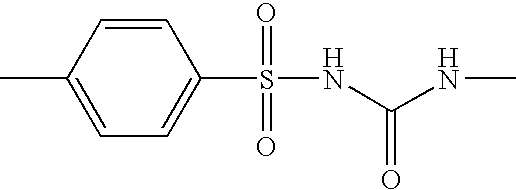Labraries of optimized cytochrome P450 enzymes and the optimized P450 enzymes
- Summary
- Abstract
- Description
- Claims
- Application Information
AI Technical Summary
Benefits of technology
Problems solved by technology
Method used
Image
Examples
example 1
[0111] This example demonstrates how SCHEMA calculations can be applied to a library of recombined P450 enzymes of candidate chimeras. The initial library was produced by determining all possible double crossover points for the recombination of CYP102A1 and CYP102A2, with the caveat that each segment be at least 10 amino acids in length.
[0112] The sequences of CYP102A1 and CYP102A2 were aligned using ClustalW, revealing the existence of a one-amino acid insertion relative to CYP102A1, between Q229 and S230. (Thompson et al., Nucleic Acids Res 22,4673-4680 (1994)). This insertion was ignored in the calculations. CYP102A1 residues G227 and E228 were also ignored because they are unresolved in the substrate-bound structure (1JPZ). The error values reported for E and m represent one standard deviation. Any distance between two residues greater than 4.5 angstroms was characterized as a disruption.
[0113] The number of contacts broken by the recombination (E) for each chimera was calcula...
example 2
[0115] This example demonstrates how the nucleic acids encoding the chimeras generated in example 1 can be constructed. Selected chimeras were constructed using SOEing methods, as described previously (Horton et al., Gene 77,61-68 (1989)). Chimeras contained residues 1-463 from CYP102A1 or the corresponding residues in CYP102A2 (1-466). Two primers consisting of a 5′ sequence from one parent (A) and a 3′ sequence from the other (B) that encompass the crossover site were used to amplify the sequence to be inserted (B) with 25-30 b.p. overhangs from the other sequence (A).
[0116] The PCR protocol was to heat the plasmids and primers at 95° C. followed by 22 cycles of 95° C. for 1 minute, 48° C. for 1 minute, and 72° C. for 2 minutes with a final extension at 72° C. for 10 minutes. These products acted as primers in a further PCR reaction along with forward and reverse primers external to the ends of the gene containing BamHI and EcoRI restriction sites, respectively, for cloning into ...
example 3
[0117] This example demonstrates how the chimeras can be expressed as protein. Chimeric P450s were expressed in catalase-deficient E. coli using the isopropyl-β-D-thiogalactopyranoside (IPTG)-inducible pCWori vector (Nakagawa et al., Biosci Biotechnol Biochem 60, 415-420 (1996), Barnes et al., Proc Nail Acad Sci USA 88, 5597-5601 (1991)). Cultures grown in terrific broth (TB) were shaken at 250 rpm and 30° C. until they reached an OD600 of approximately 0.8. They were induced with 0.6 mM IPTG, supplemented with 25 μg / ml thiamine and 0.5 mM δ-aminoleuvulinic acid, and grown for 20 h at 180 rpm and 25° C. This procedure yields approximately 80 mg / L of P450 protein for CYP102A1 and CYP102A2. Cultures were pelleted at 5,500×g for 15 min, resuspended in 50 mM Tris (pH 8.2), and lysed by sonification. Centrifugation was used to clear the supernatant, which was used for further assays described in the following examples.
PUM
| Property | Measurement | Unit |
|---|---|---|
| Distance | aaaaa | aaaaa |
| Interaction | aaaaa | aaaaa |
Abstract
Description
Claims
Application Information
 Login to View More
Login to View More - R&D
- Intellectual Property
- Life Sciences
- Materials
- Tech Scout
- Unparalleled Data Quality
- Higher Quality Content
- 60% Fewer Hallucinations
Browse by: Latest US Patents, China's latest patents, Technical Efficacy Thesaurus, Application Domain, Technology Topic, Popular Technical Reports.
© 2025 PatSnap. All rights reserved.Legal|Privacy policy|Modern Slavery Act Transparency Statement|Sitemap|About US| Contact US: help@patsnap.com



